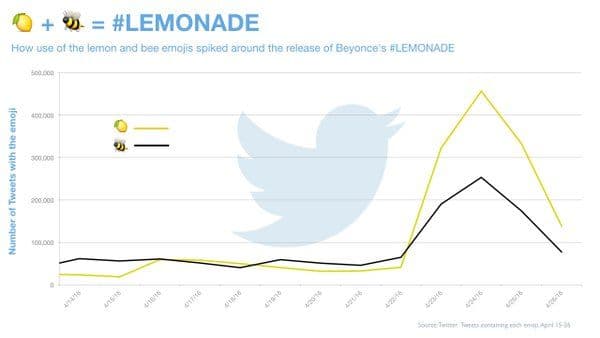3 Things Product Marketers Can Learn From Beyoncé
Here are three things we can learn about product marketing execution from Beyoncé and Lemonade.
Unless you spent the last week in a coma, you won’t need me to tell you about the one thing on everyone’s mind that’s currently causing the Internet to implode: #LEMONADE. On April 23, Beyoncé dropped her sixth solo album, accompanied by an hour-long conceptual film that premiered on HBO. In less than 24 hours, every major media outlet had some variation of “Beyoncé breaks the Internet with ‘Lemonade’” published. _The New York Times even featured the release on the front page of the Sunday paper, above the fold. Anyone who was anyone had something to say about Queen Bey’s release; within less than 24 hours, the Internet was bursting with think pieces about feminism, racism, and lyric-by-lyric analyses of songs that seemed to reflect Beyoncé’s marital strife. Setting aside the obvious–that Beyoncé is a goddess–the astute will note that in addition to her talent, her marketing game slays. She has been disrupting the album release cycle since 2013, when she dropped her fifth studio album without so much as a PR whisper. Let’s be real. We can all learn a thing or two from Queen Bey. But the wildly hyperbolic reactions to Lemonade and basically anything else she does ever is every product marketer’s dream come true. Here are three things we can learn about product marketing execution from Beyoncé and Lemonade:
- Building a loyal fanbase of brand evangelists is key
- Taking creative risks, both in terms of product and PR, pays off
- Launching bold marketing campaigns will set you apart from the crowd
The power of fandom
Having a handful of brand advocates is good; having a fanbase of loyal brand evangelists is worth its weight in gold. The “Beyhive” is one of the strongest, most loyal fandoms in existence. All Bey has to do is post one Instagram photo, drop one teaser, and her fans carry her on their metaphorical shoulders all over the Internet. [Tweet “Having #brand advocates is good; having a fanbase of loyal brand evangelists is gold.”] When Lemonade released, Beyoncé’s fans wasted no time storming Twitter with #LEMONADE along with the bee and lemon emoji. In fact, use of those emojis spiked in the days following the release; and in just 48 hours, there were 4.1 million tweets about the artist and her latest album. Source: Twitter: An incredible amount of work goes into building a core group of brand evangelists like Beyoncé’s, but the crux of it boils down to accomplishing two things:

- Have a solid brand identity. A brand identity encompasses a person or company’s purpose, concepts, values, and strengths. It’s how a certain brand makes you feel when you think about them. For a public figure like Beyoncé, this is everything from her aesthetic to her music to her choreography to all her public facing interactions with the press, on her website, and via social media handles. Today, Beyoncé’s brand identity is so solid, you don’t even have to be familiar with her music to come up with a couple of ways to describe her (“fierce,” “flawless,” “kween”). Her fans know who she is. In the same way, a company with a solid brand identity evokes a certain emotion among their target user group; each product or service associated with that brand contributes to the core user experience that underlies the brand.
[Tweet “#Brand identity encompasses purpose, concepts, values, and strengths.”] - Develop a relationship with your fans. Your fans not only have to understand who you are, they also have to feel like they have a personal relationship with you. Beyoncé acknowledges her Beyhive with subtle, but frequent references to them on social media and during concerts, using the beehive image. She is continuously reinforcing her relationship with her fans. By developing a relationship with your most loyal users, you can turn them into advocates and fans. Loyal fans become a part of your brand identity and help you spread your brand throughout their networks.
Inspiring product or brand loyalty among your users through communication is key in retaining your users. There’s lot of talk about Bey “breaking” the Internet with Lemonade, but without her loyal fans — her brand evangelists — she wouldn’t have achieved the viral effect that she did with this release. Celebrities don’t break the Internet. Their fans do.
Taking creative risks can pay off
Risks can be, well, risky. Something you might’ve considered hugely innovative may not resonate at all with your target users. But when you have a solid brand identity and a fanbase — a core group of brand evangelists and power users of your product — taking creative risks with your product or your marketing strategy (or both) can result in huge payoffs. On one random day in December 2013, Beyoncé made music history. Without so much as a promotional whisper, Beyoncé dropped her first, self-titled “visual” album, comprising 14 new tracks and 17 music videos. She deliberately went against the music industry’s standard marketing strategy of creating hype over singles and, instead, chose to give her fans a new experience. Not only did she disrupt how artists release their music, her album at the time itself broke convention. “I see music,” Beyoncé said in a press release as she described her visual album. “It’s more than just what I hear. When I’m connected to something, I immediately see a visual or a series of images that are tied to a feeling or an emotion, a memory from my childhood, thoughts about life, my dreams or my fantasies. And they’re all connected to the music.” The unconventional release of Beyoncé’s first visual album hardly hurt its reception; if anything, it generated more interest than artists who follow the typical album release cycle. Within the first three hours of the release, Beyoncé sold 80,000 units and nearly half a million digital copies within 24 hours. And despite being released in mid-December, Beyoncé was ranked best album of the year by Billboard, Houston Chronicle and Los Angeles Times.
Bold, well-executed marketing campaigns
If you take a careful look at the leadup to the Formation Tour (which kicked off in Miami on April 27), you’ll notice that Bey’s been leading up to Lemonade’s release for months. Let’s take a look at the timeline:
September 2015
Beyoncé posts photo of her with a lemon on Instagram
February 6, 2016 (day before Super Bowl)
Release of “Formation” track and music video
February 7, 2016 (Super Bowl 50)
Half-time show performance Formation World Tour announcement
March 31, 2016
Announcement and promotional video for Beyoncé’s activewear clothing line Ivy Park
April 14, 2016
Official launch of Ivy Park
April 23, 2016 (day before_ Game of Thrones_ season 6 premiere)
Hour-long release of Lemonade on HBO Lemonade available for streaming exclusively on Tidal
April 27, 2016
Formation World Tour kickoff
(adapted from Forbes) Beyoncé executed each stage of this campaign much like she does everything else–flawlessly. It perfectly highlights the efficacy of having multiple cornerstone events (or in the case of a product launch, multiple announcements and features), each compounding the interest of your target audience. Think it was a coincidence that Bey’s release of Lemonade was on the same weekend as the Game of Thrones premiere? Most likely, it wasn’t. Time your marketing campaign right and execute it well, and the public’s building excitement will peak right alongside the date of your launch. Sure enough, when Beyoncé’s Lemonade released, the splash was so loud, the ripple effects of the launch were felt all over the Internet. In one week, her Twitter following grew 4000%; even her husband’s Wikipedia page saw an uptick in page views.
A photo posted by Beyoncé (@beyonce) on Sep 20, 2015 at 8:17am PDT
Reality check
We can’t all be Beyoncé. But we can learn a thing or two about how to launch a product from her. Focus on building a strong brand identity backed by a loyal group of users, take risks with your product and marketing strategies, and execute a well-timed marketing campaign. With enough practice, you too could make another underused emoji go viral on Twitter someday.

Archana Madhavan
Senior Learning Experience Designer, Amplitude
Archana is a Senior Learning Experience Designer on the Customer Education team at Amplitude. She develops educational content and courses to help Amplitude users better analyze their customer data to build better products.
More from Archana




